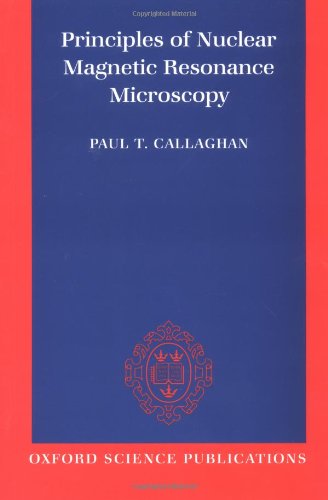Principles of Nuclear Magnetic Resonance Microscopy by Paul Callaghan


Principles of Nuclear Magnetic Resonance Microscopy Paul Callaghan ebook
Format: djvu
Publisher: Oxford University Press, USA
ISBN: 0198539444, 9780198539445
Page: 512
Le Bihan studied NMR imaging intensively and suggested that diffusional movements of water and other molecules inside the body could be used to visualize microscopic structure and function of the organs and tissues being observed with MRI. Callaghan, Principles of Nuclear Magnetic Resonance Microscopy (Clarendon Press, Oxford, 1993)[ Amazon][WorldCat]. The CCP4 model has inspired similar developments in NMR, and it is hoped that the biological XAS community may pursue similar collaboration. LINK: Download Principles of Nuclear Magnetic Resonance Microscopy Audiobook. Therefore, state-of-the-art software can be made available to Similar initiatives are underway for NMR and electron microscopy. States of Matter, Phase Transitions, Critical Points. Rainer Kimmich, NMR Tomography, and Diffusometry, Relaxometry (Springer-Verlag, Berlin, 1997)[Amazon][WorldCat]. In principle, a program in any language can be included in the suite with very few changes. The basis of NMR The principle behind NMR is that many nuclei have spin and all nuclei are electrically charged. Keywords: collaboration; software; protein crystallography. Nuclear magnetic resonance is best known for its spectacular utility in medical tomography. He has published around 220 articles in scientific journals, as well as Principles of Nuclear Magnetic Resonance Microscopy (Oxford University Press, 1994). An NMR technique tracks the diffusion of water molecules to obtain micron-scale structural information about a porous material. The principles and measurement techniques underlying Diffusion MRI are rooted in the classic formula proposed for Nuclear Magnetic Resonance (NMR) by E. Experimental probes: X-ray scattering, neutron scattering, NMR, thermodynamic, transport.